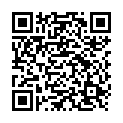|
|
|
| Module code: E932 |
|
2V (2 hours per week) |
|
2 |
| Semester: 9 |
| Mandatory course: no |
Language of instruction:
German |
Assessment:
Written examination
[updated 13.03.2010]
|
E932 Electrical Engineering, Master, ASPO 01.10.2005
, semester 9, optional course
|
30 class hours (= 22.5 clock hours) over a 15-week period.
The total student study time is 60 hours (equivalent to 2 ECTS credits).
There are therefore 37.5 hours available for class preparation and follow-up work and exam preparation.
|
Recommended prerequisites (modules):
None.
|
Recommended as prerequisite for:
|
Module coordinator:
Prof. Dr. Volker Schmitt |
Lecturer:
Prof. Dr. Volker Schmitt
[updated 13.03.2010]
|
Learning outcomes:
By applying the theories and methods taught in this course, students will be able to systematically determine the structure and characteristics of electronic filter circuits with specified properties.
[updated 13.03.2010]
|
Module content:
Network theory, filter classes, pole-zero plots
Analogue transmission systems, time-discrete systems
Synthesis of two-terminal networks, synthesis of passive two-port network, realizability conditions, ‘T’ and ‘Pi’ equivalent circuits
Realizing transfer functions, special transfer characteristics: Bessel, Butterworth, Chebyshev, Cauer
Active filters, converters, gyrators, cascade connections
Time-discrete filters, switched-capacitor (SC) filters
Time-discrete and discrete-amplitude filters, digital filters
[updated 13.03.2010]
|
Teaching methods/Media:
Overhead transparencies, master copies for photocopying
[updated 13.03.2010]
|
Recommended or required reading:
UNBEHAUEN, R.: Synthese elektrischer Netzwerke und Filter; Oldenbourg 1988.
BERNSTEIN, H.: Analoge und digitale Filterschaltungen; VDE-Verlag 1995.
MILDENBERGER, O.: Entwurf analoger und digitaler Filter; Vieweg 1992
[updated 13.03.2010]
|


